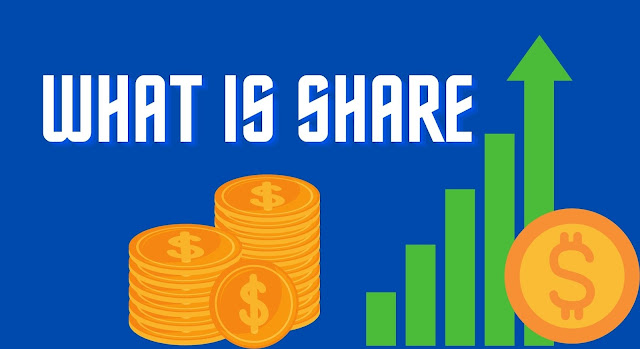Today we will know what is stock and what are its types. How do they reduce in the stock market and how are they sold due to different types.
First of all, we will understand what is a share or a stock?
Shares represent a unit of ownership of the issuing company. There are many factors that can affect the way it circulates.
When a company performs well and grows in great ways, its stock price rises. In such cases, you can sell some of the company's stock at a higher profit if you are a shareholder.
Are there different types of shares?
Simply put, there are two types of shares.
1.Equity Shares
2. Preference Shares.
Equity share:
Equity shares are known as common shares. These are one of the most common types of shares. These stocks are documents that give the ownership rights of the company to the investors. Equity shareholders bear the highest risk. The owners of these shares have the right to vote on various matters of the company. Equity shares are also transferable and the dividend paid is a profit ratio. It should be noted that equity shareholders are not entitled to a fixed dividend. The liability of the equity shareholder is limited to the amount of their investment. However, there are no preference rights in the holding.
Equity shares are classified according to the type of share capital.
Authorized Share Capital:
This is the maximum amount of capital that the company can issue. It may be extended from time to time. For this, a company has to conform to certain formalities and also pay necessary fees to legal entities.
Issued Share Capital:
It is part of the authorized capital that a company offers to its investors.
Subscribed Share Capital:
It refers to the portion of the issued capital, which the investors accept and agree upon.
Paid up Capital:
It refers to the portion of subscribed capital for which investors pay. Since most companies accept the full subscription amount at once, the issued, subscribed, and paid-up capital are the same thing.
# How To Open Online Trading Account
There are other types of shares.
These are some of these types of stocks, about which it is very important to know in detail. It brings ups and downs in the stock markets.
Right Share:
These are the types of shares that the company issues to its existing investors. Such stocks are issued to protect the ownership rights of the existing shareholders.
Bonus Shares:
Sometimes, companies may issue shares to their shareholders as a dividend. Such shares are called bonus shares.
👉 What is NRI share trading account
Sweat Equity Shares:
When employees or directors perform their roles exceptionally well, sweat equity shares are issued to reward them.
play video game:
In our discussion about what are the types of shares, we will now look at preference shares. When a company is liquidated, the shareholders holding preference shares are paid first. They also have the right to receive the profits of the company before the common shareholders.
Cumulative and Non-Cumulative Preference Shares:
In case of cumulative preference share, when the company does not declare dividend for a particular year, it is carried forward and accumulated. When the company makes profits in the future, these accumulated dividends are paid first. In case of non-cumulative preference shares, dividends are not accumulated, which means that when there is no future profit, no dividend is paid.
Participating and Non-participating Preference Shares:
Dividend shareholders have the right to participate in the remaining profits after the dividend is paid to the equity shareholders. So in years where the company has made more profit, these shareholders are entitled to receive more dividends over and above the fixed dividend. The holders of non-participating preference shares are not entitled to participate in profits after the equity shareholders are paid. So if a company makes any additional profit, they will not get any additional dividend. They will only receive their fixed share of the dividend every year.
Convertible and non-convertible preference shares:
Here, the shareholders have the option or the right to convert these shares into common equity shares. For this, specific terms and conditions need to be fulfilled. There is no right to convert non-convertible preference shares into equity shares.
Redeemable and Irredeemable Preference Shares:
Redeemable preference shares can be repurchased or claimed by the issuing company. This can happen at a predetermined price and at a predetermined time. These do not have a maturity date which means that such shares are not perpetual. Hence companies are not bound to pay any amount after the specified period.
What did we go today?
Today we learned that understanding shares and its types will help us understand how the stock market works. If you liked this information, then you must tell us in the comment box.








.jpeg)

.jpeg)
0 Comments
Please do not enter any spam link in the comment box.